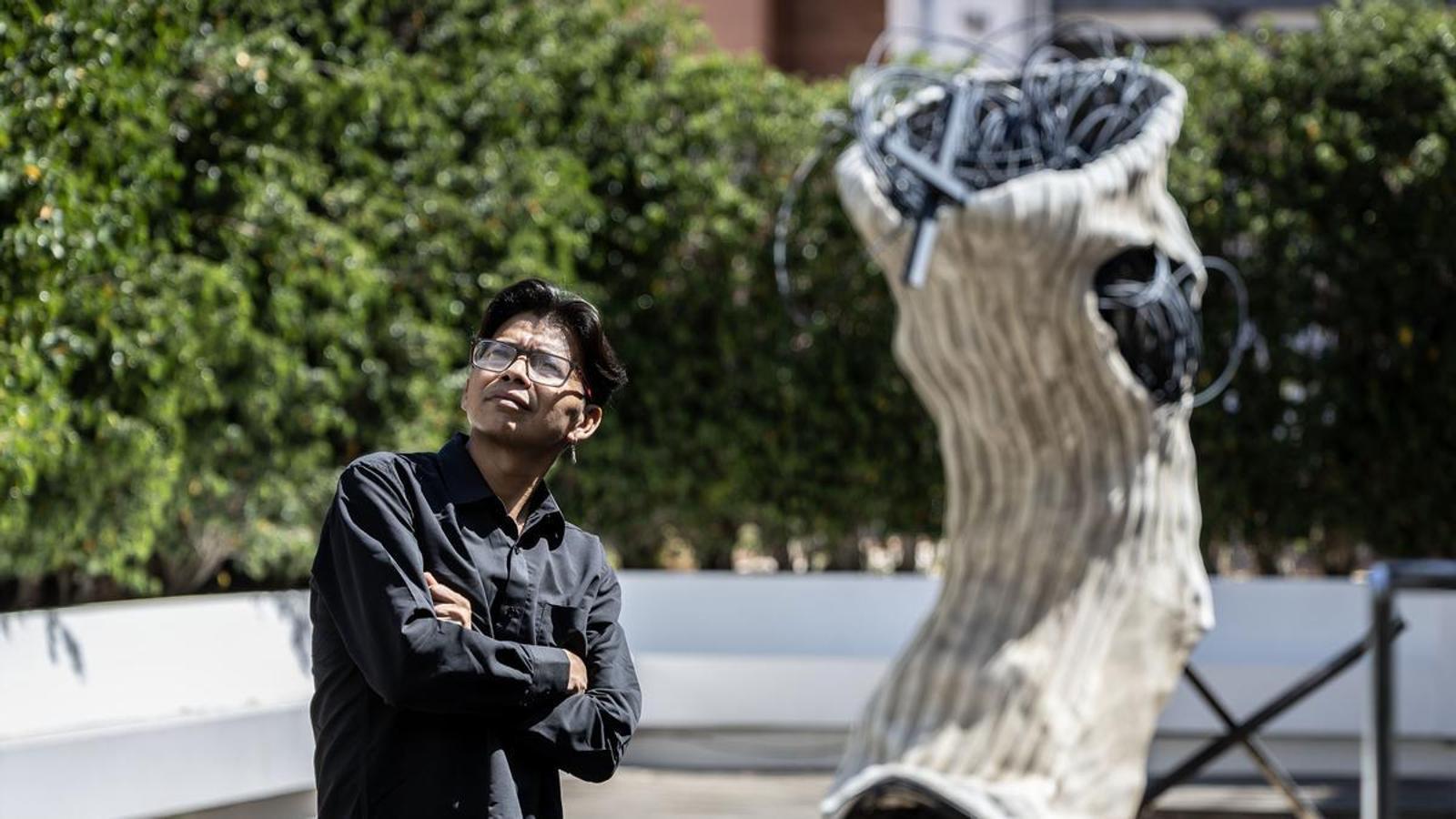Benvenuto Chavajay: "I'm more interested in disobedience than resistance."
The Guatemalan artist will be tattooed in a sacred performance at the Museu Tàpies.


BarcelonaSomething as mundane as a conversation with his father marked a turning point in the career of artist Benvenuto Chavajay (San Pedro la Laguna, Guatemala, 1978). Chavajay asked him what art meant to him. After a long silence, his father replied that the concept didn't exist either in his language, Tzututil, or in his memory. Chavajay was surprised by this silence and has been delving into art for about twenty years, with works like the performance he will perform at the Museu Tàpies this Thursday.
"According to Western logic, my father was illiterate, because he couldn't read or write," explains Benvenuto Chavajay. "When he fell silent, this silence began to speak to me more and overthrew the ancestral logic and rhetoric of Western modernity. My father spoke to the stones, to the earth, to nature. There are other forms and ways of reading reality, and my father taught me to read ancestral realities."
On this new path, Chavajay began to "forget" Western logic and rhetoric and delved into "the ancestry and worldview of Mayan culture." "I dusted off history and activated memory, but an ancestral memory," says the artist. And that led him to return "to the navel," to what is most important. "My navel is hidden, buried where my roots are deepest, my people, the Mayan peoples, the indigenous peoples of Guatemala," she says.
In a world as turbulent as today's, Chavajay maintains that art can have a healing power. "We are now witnesses to these realities, to many historical realities that are wounded. So the artist must embrace the wounds and the legacies, and bring them toward a new humanity." At the same time, they must "bear witness" to what they do based on culture and peoples."
Decolonizing Museums
In the face of the announcements by numerous museums around the world that they want to decolonize, Chavajay believes it is possible, but that first we must "go through the wounds and legacies." "I come from a people who carry it in their blood, in the land, and in their dignity. So, to go through them, you must feel the pain, the legacy, and the wound. Without feeling this, it makes no sense."
This call may seem naive in a world at war. But Chavajay doesn't see himself as a resister. "I'm more interested in disobedience than resistance, because resistance comes from the political and ideological side, and that hasn't worked for our communities in the Americas. What does work is epistemic disobedience, and disobedience must be embraced through culture. I believe that culture can heal part of reality," he explains.
The Sacred Numbers of the Mayan Calendar
In the performance that Chavajay will give to the Museu Tàpies they will tattoo two sacred names of the Mayan worldview: the 13, which represents the maximum energy, and the 0. "The West and modernity have secularized the number 13 with that of the bad sort, and the 0 with the no-res. But in the Mayan thought it is the beginning and the end, the whole, the most sacred", said the artist. Likewise, doing it in the State, due to its colonial history, provides an exceptional character to the performance. "Getting a tattoo here is very important because it will confirm and reaffirm that 13 and 0 are the most sacred," he says. Be that as it may, Chavajay says that he is not coming "to tear down walls or tear down monuments or sculptures." "I simply come to give myself a second chance, which means being more human."
Chavajay will perform again at the Montjuïc Cemetery, the Olympic Stadium, and possibly outside the Sagrada Família. During this performance, he will walk through these places, carrying a painting depicting a fertilizer house with a dove on its roof. This image evokes a poem about girls who threw themselves off a cliff before being taken by settlers, and when they were in the air, they turned into doves.
